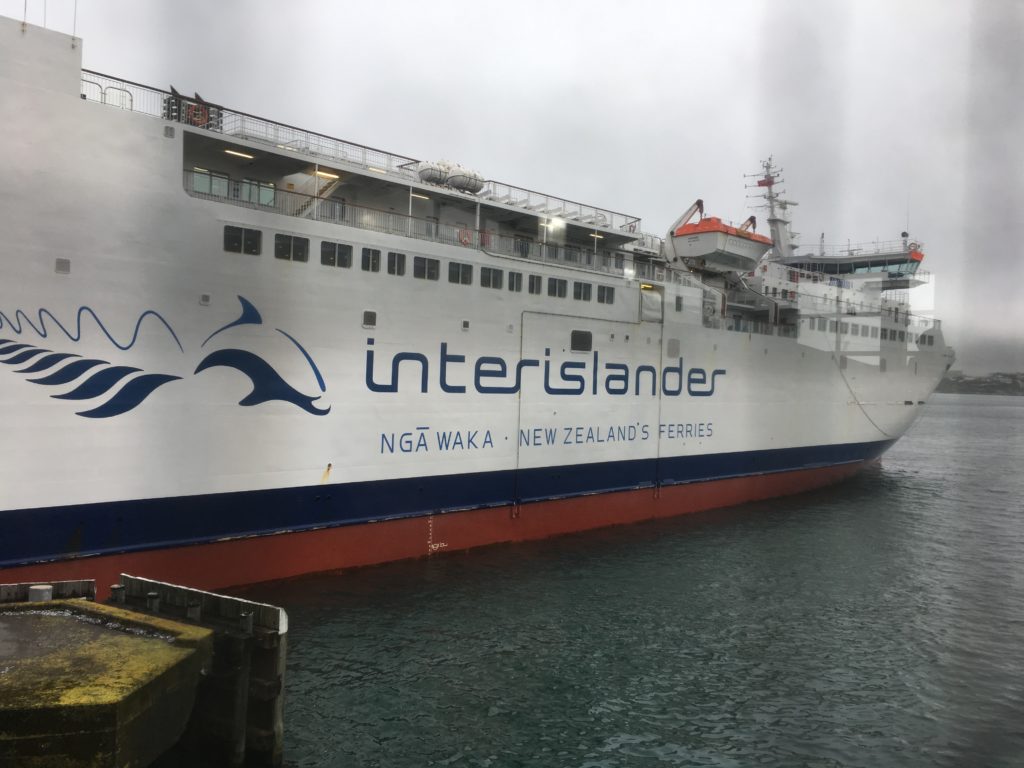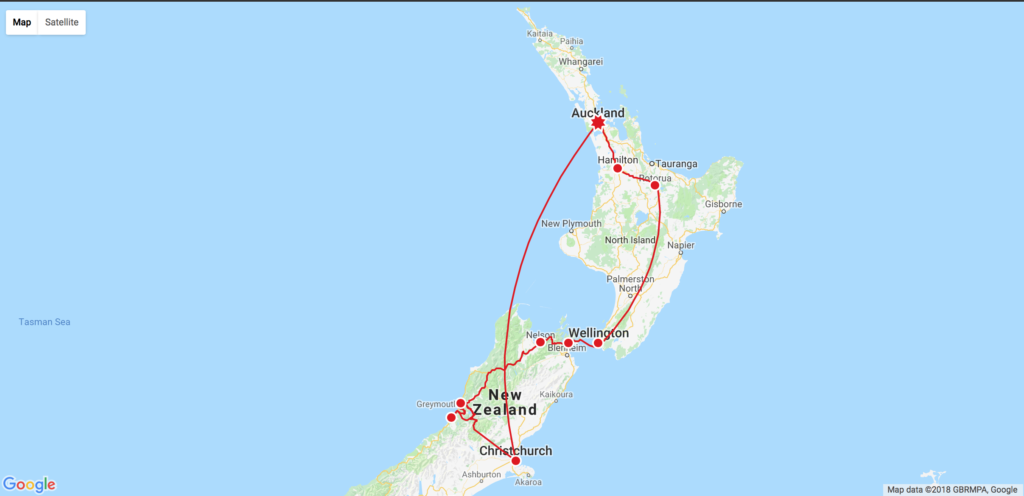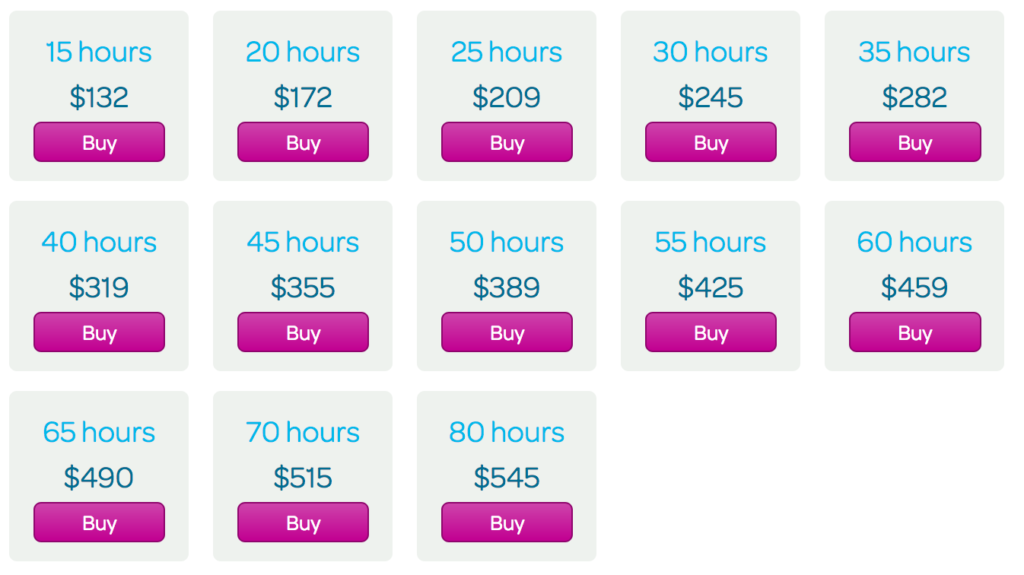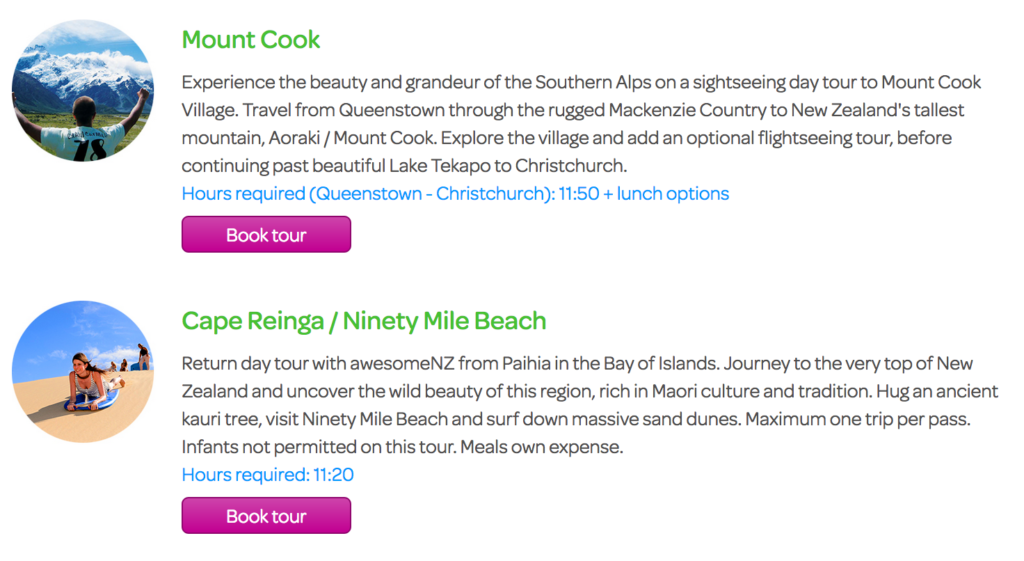Buenos dias everyone! Today, I want to tell you about InterCity, the bus network we used to travel around New Zealand during our 3 weeks on the islands. InterCity is the largest bus network in New Zealand, and is jointly owned by 3 different bus operators in the country. In addition to its own Intercity-branded buses, it also uses coaches from its subsidiary brands (like Gray Line and GreatSights) and its parent companies. You can buy tickets for individual routes on their website, at very reasonable prices (like Megabus in the United States, some routes start at $1).
You can also buy passes on their website, which is what we did. InterCity offers two types of passes – a TravelPass, which has a pre-set itinerary but allows you to spend as much or as little time at each stop as you want – and a FlexiPass, which works much like a prepaid SIM card for your phone. You purchase a pass that’s valid for a certain number of bus hours – the more hours you buy, the less you pay per hour.
After you buy your pass, you use the InterCity website to select the ticket of your choice, then use your pass as payment. A 3 hour bus ride would reduce your balance by 3 hours. Passes are valid for a year from the date of purchase, and are transferable. If you run out of hours, you can “top up” with 3 hours for $35 or 10 hours for $95. Hours can also be used for the InterIslander ferry between Wellington and Picton, and a handful of day tours – just check the cash price for a similar tour to make sure you’re getting a good deal, and note that you still have to pay entrance fees for most tours.
After plotting out our trip and comparing the pass price vs. buying tickets individually, I decided to buy two 20 hour passes (you need a separate pass for each person – although drivers don’t check ID, the system won’t let you book multiple tickets on the same bus). After factoring in the price of the InterIslander ferry, the price was about the same as what we would have paid booking separate tickets for every leg of the trip – but those would have been standard nonrefundable tickets, while the Flexipass books into InterCity’s flexible fare bucket, which allows changes without penalty up to 2 hours prior to departure.

A photo of the InterIslander ferry Aratere from the dock in Wellington. We used our InterCity bus pass to book a ticket on this ferry!
Certain routes also offer InterCity GOLD, which is a kind of ‘premium economy’ product – wider leather seats with dedicated power outlets, and buses that are guaranteed to have WiFi. This product is available on the North Island between Wellington and Auckland, Whanganui, and Napier, as well as between Hamilton and Auckland Airport, and on the South Island between Picton and Christchurch or Dunedin and Queenstown. The price increase is relatively inexpensive – about $5 for the shortest routes, around $25 for a longer trip like Picton to Christchurch – and if you have a FlexiPass, you can reserve a GOLD seat online by paying the difference in fare compared to a normal seat on the same bus. None of the buses on our trip offered this class of service, but it seems like it could easily be worth it for longer trips.

A photo of the Pancake Rocks at Punakaiki, where we stopped for lunch en route from Nelson to Hokitika.
Overall, we had a very positive experience with InterCity. Every bus we rode was clean and relatively comfortable, and most routes had few enough travelers that we could each get an empty seat next to us to spread out. We ended up traveling on a wide variety of buses operated by several different companies, so various features like seat layout, WiFi, and restrooms were highly variable – so I definitely recommend using the bathroom before you board, and at every scheduled tea/meal stop (typically every 2-3 hours). With the notable exception of our return trip from Waiotapu to Rotorua, the buses ran very close to their schedules.
The InterCity app makes it easy to review your itinerary and find the pickup and dropoff points for your trip. (It also offers a boarding pass option, although none of our drivers ever used it – they just asked for our names). It also shows you what your bus should look like and has a built-in bus tracking feature, but those didn’t work so well – the bus we rode on only matched the provided photo on 1 or 2 of our trips, and I think only our first bus supported the bus tracker.
Have you ever used buses to travel around New Zealand? Do you have any questions about our experience? Let me know in the comments!




